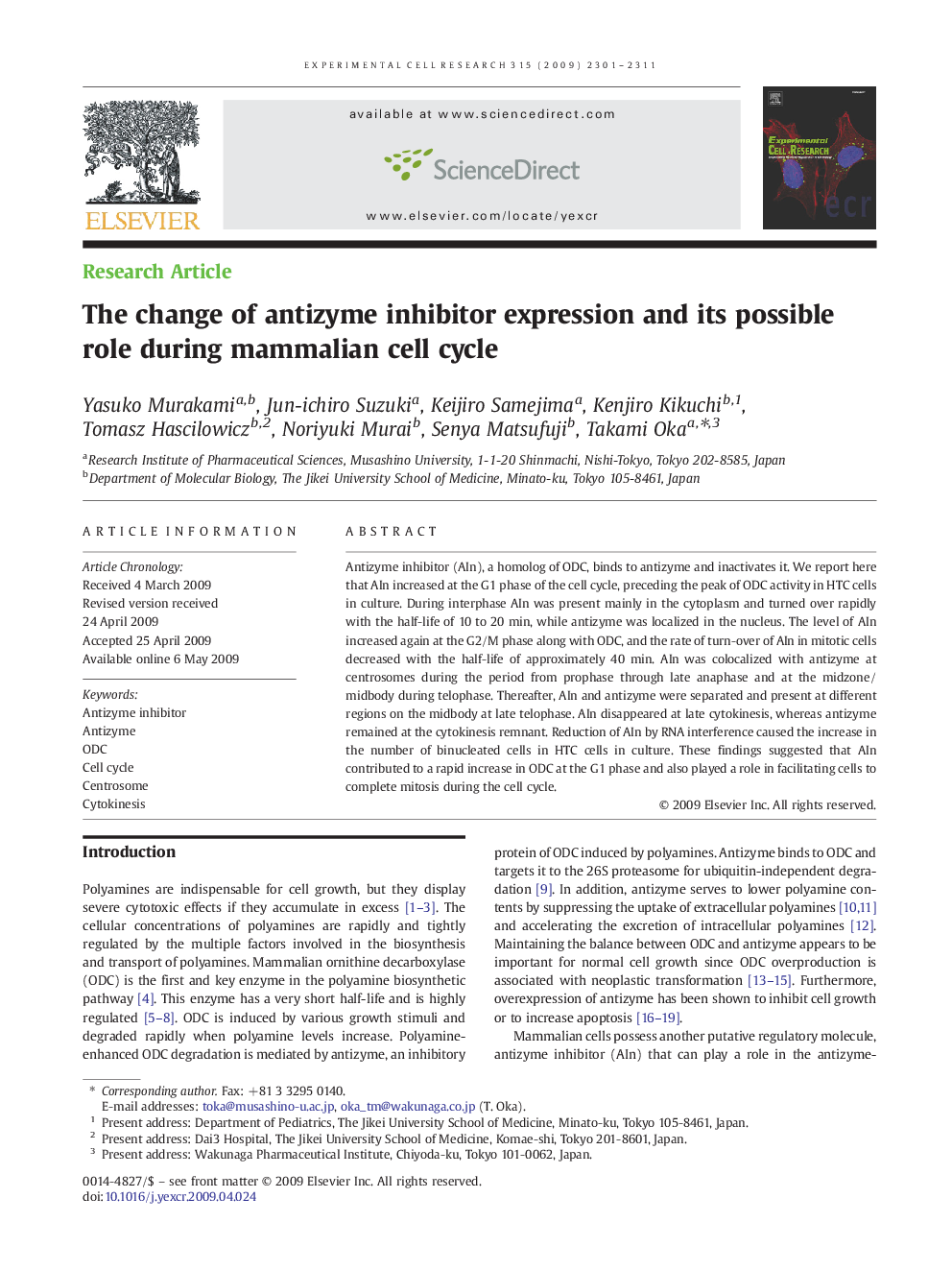| Article ID | Journal | Published Year | Pages | File Type |
|---|---|---|---|---|
| 2131673 | Experimental Cell Research | 2009 | 11 Pages |
Antizyme inhibitor (AIn), a homolog of ODC, binds to antizyme and inactivates it. We report here that AIn increased at the G1 phase of the cell cycle, preceding the peak of ODC activity in HTC cells in culture. During interphase AIn was present mainly in the cytoplasm and turned over rapidly with the half-life of 10 to 20 min, while antizyme was localized in the nucleus. The level of AIn increased again at the G2/M phase along with ODC, and the rate of turn-over of AIn in mitotic cells decreased with the half-life of approximately 40 min. AIn was colocalized with antizyme at centrosomes during the period from prophase through late anaphase and at the midzone/midbody during telophase. Thereafter, AIn and antizyme were separated and present at different regions on the midbody at late telophase. AIn disappeared at late cytokinesis, whereas antizyme remained at the cytokinesis remnant. Reduction of AIn by RNA interference caused the increase in the number of binucleated cells in HTC cells in culture. These findings suggested that AIn contributed to a rapid increase in ODC at the G1 phase and also played a role in facilitating cells to complete mitosis during the cell cycle.
